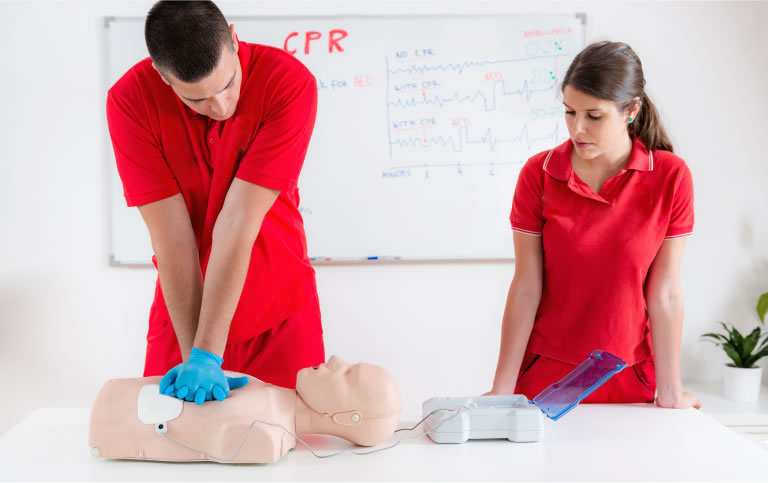CPR, First Aid, BLS, ACLS, PALS certifications.


| Chapters | CE Credits | Validity | Cost | Duration | ECC | Exam Attempts | Wallet Card |
|---|---|---|---|---|---|---|---|
| 25 | 6.0 | 2 Years | $36.95 | 1-2 Hrs | Compliant | Unlimited | Download/Print/Mail |
ECC and updated guidelines 2010 updates changed the CPR sequence from A-B-C to C-A-B. Often in the A-B-C method chest compressions were delayed. With the new Compressions – Airway – Breathing method a victim receives compressions faster, providing quicker critical blood flow to the vital organs. In short, the ABC of CPR is now CAB.
The sequence of steps for conducting CPR using the C-A-B method (detailed further in following chapters).
In these times when everyone is being affected by the Coronavirus disease (COVID-19), many healthcare providers have limited access to adequate PPE.
Below are the primary interim changes to CPR during COVID-19 times.
PPE should be put on before assisting patients in cardiac arrest.
For Adults:
For Children
Per the 2015 updates, you should deliver at least 100 to 120 chest compressions per minute (previous rate was 100 compressions / minute). Recent science indicates that more compressions lead to a higher survival rate. This new update sets an upper limit for the chest compression rate, as excessive compressions and depth can adversely affect a patient’s outcome.
The Hands-Only CPR method is recommended for use on teens or adults that you witness suddenly collapse. This is CPR without the rescue breaths.
You would need to:
*The Good Samaritan Law is intended to reduce bystanders’ hesitation to assist in an emergency.